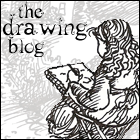
The history of the Netherlands is an intriguing one. Its unique geography, location, and political state combined to create the first modern Republic. Lets quickly overview some of the major events that took place between 1100 and 1600 A.D. in the Netherlands and see how they impacted this truly amazing country.
During the twelfth and thirteenth centuries the Netherlands, or Low Lands as they are often called, developed a keen interest in trade. The people were hard working and industrious, reclaiming much of their land from the wild North Sea by means of dikes and dams. They fished and built ships for other countries, and then became interested in shipping and importing textiles. Quickly the cities grew fat with profit and began to question their nobles authority over them. Many cities became city states and were given the right to have defensible walls, markets, toll rights, storage rights (the right to store and exclusively trade particular goods), and mint rights. The inhabitants of cities were not subject to liegelords and had more personal freedom than country folk concerning travel and the choice of religion.
Then, in 1517, a small paper nailed to a church door in Germany by a monk called Martin Luther sparked a religious reformation that impacted the Netherlands cataclysmically. The Protestant Reformation was just that, a protest against the Catholic church’s teaching and a call for reformation in Church doctrine. This coincided nicely with the growing resentment the Netherlands had against their foreign overlords – who were Catholic. In the early sixteenth century Charles V, the Holy Roman Emperor, was handed control of the Netherlands by the Dukes of Bourgogne. He in turn passed it to his son Phillip II of Spain. By this time the majority of the Netherlands were Protestants, more than that, they were Calvinist Protestants.
Phillip wanted to wipe out the Protestants in his domain, and the Netherlanders had already been insubordinate to him by spreading anti-catholic riots in their country during 1566. The monarch sent Spanish troops in 1568 to squelch the stocky Dutch. The eighty year war for independence which lasted until 1648 had begun.
Here one of my personal favorite military leaders enters the action, William I, Prince of Orange, also called William the Silent. The Prince of Orange was born in Germany and eventually, through many lines of successions and unintelligible twists in royal family trees (latin to the uninitiated), he became Stadholder in the provinces of provinces of Holland, Zeeland, and Utrecht. I could write a book about William I, but it will need to wait for my next paper. The Prince was a loyal Protestant and abhorred the atrocities committed against the reformers in the Low Lands under Phillip II. He rallied the country behind him and engaged in war to defend and liberate the Low Lands from foreign interference. The Southern provinces (Belgium today) eventually returned to Spanish rule, but the remaining seven Northern provinces formed the Union of Utrecht in 1579 pledging to uphold one another in the fight for freedom. On July 26, 1581, the Northern Provinces declared themselves free from Spain and formed what has come to be called “The Dutch Republic” or the Netherlands. This independence was finally recognized by the Spanish in 1648. The Golden Age of the Netherlands had dawned.










No comments:
Post a Comment